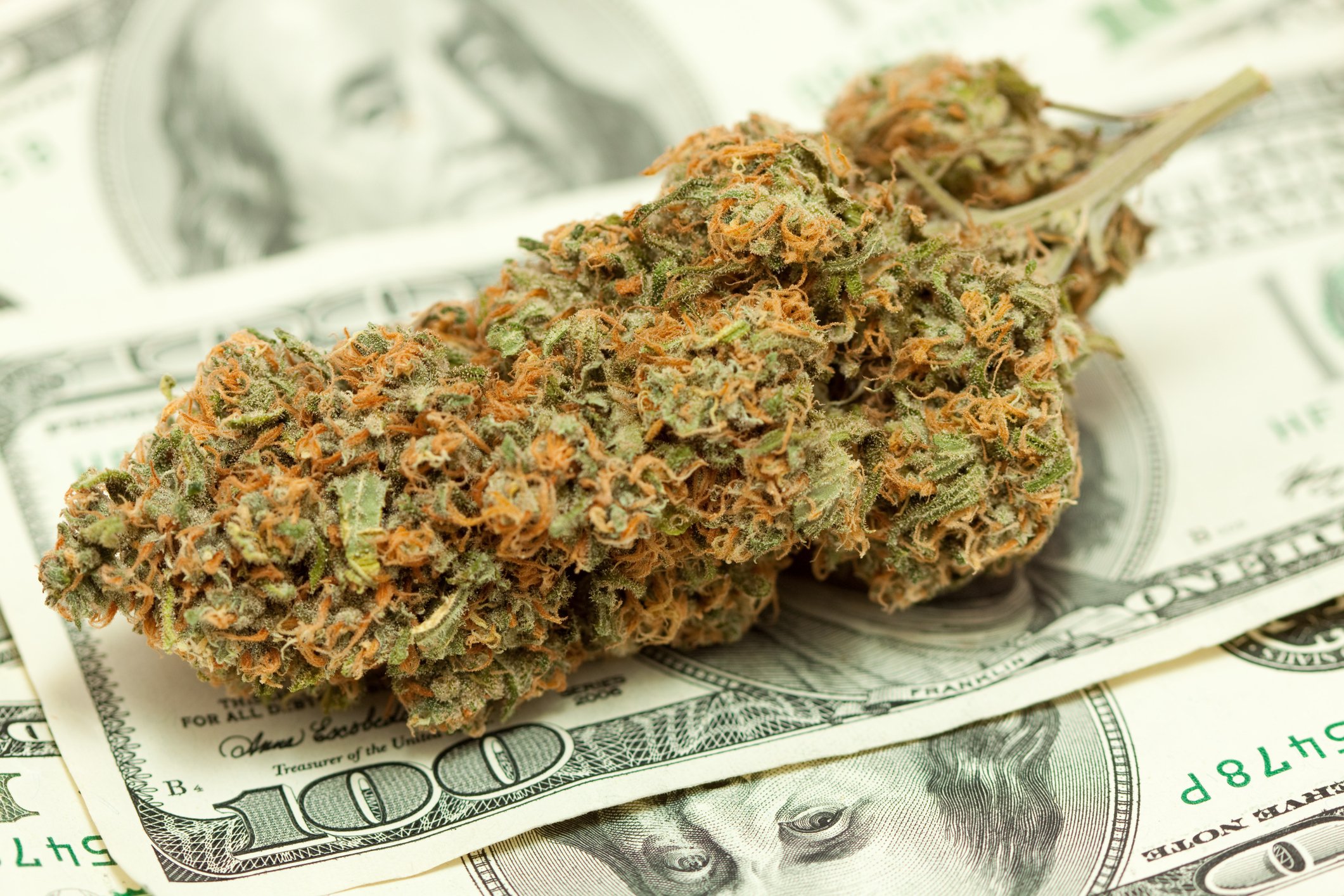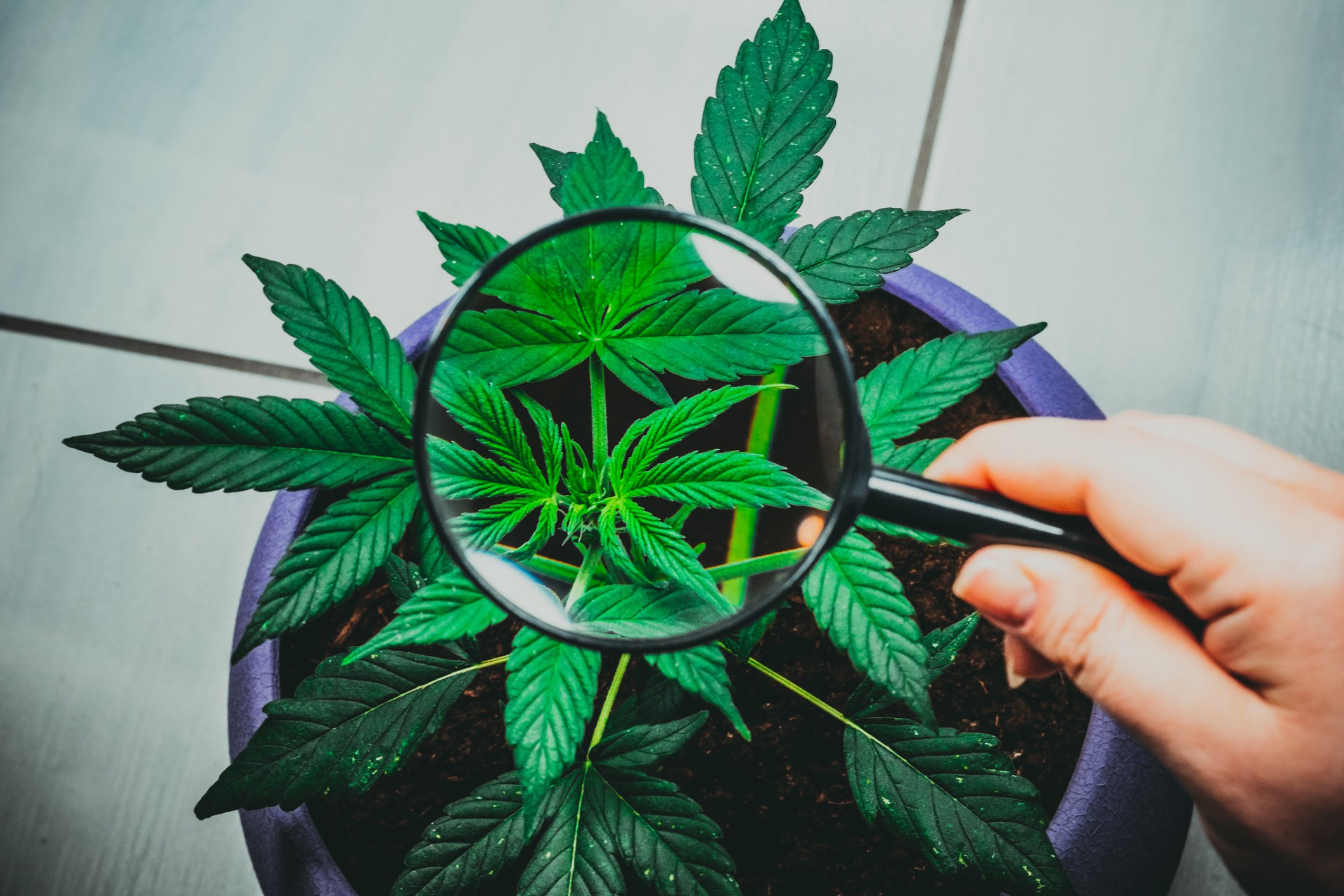
Source: GW Pharmaceuticals.
Elections are always a great time for the nation's most pressing issues to take center stage, and perhaps none has been a more hot-button issue heading into tomorrow's voting than the debate on whether or not to legalize marijuana on a recreational or medical basis.
As the law stands right now the federal government and Drug Enforcement Agency view marijuana as a schedule 1 substance. This means marijuana is considered illicit on a federal level, and should the government feel like enforcing the law it can. States, on the other hand, have been given a hands-off approach by the federal government, allowing two states (Colorado and Washington) thus far to approve marijuana for recreational adult use and another 23 states (plus Washington D.C.) to approve marijuana for medical purposes.
At stake tomorrow are three additional votes on recreational use in Oregon, Alaska, and Washington D.C., as well as a vote on medical marijuana in Florida. These votes could bring in additional tax revenue for these respective states as well as please a number of citizens who either desire to use the currently illegal drug on a recreational basis or for medical purposes.
Five breathtaking marijuana facts
But, just how well do you really understand the public's perception of marijuana? My bet would be that you've only heard half the story at best. That's why we're going to turn our attention to a publication from the Pew Research Center which recently looked at five of the most intriguing marijuana facts. If knowledge is power, then you'll be the Incredible Hulk on marijuana facts heading into midterm elections after this.
No. 1: Support for marijuana is surging.
Support for legalizing marijuana on a recreational basis has been growing for decades, but the past decade has resulted in a dramatic surge in favorability from Americans. Pew Research Center's survey, conducted in October, notes that 52% of respondents are in favor of legalizing marijuana compared to the 45% that want it to remain illegal. To add some context to this figure, just 32% were in favor of approval less than a decade ago, and a mere 16% favored approval 25 years ago.

Source: Flickr user aNdrzej cH.
Of course, Pew's data wasn't an anomaly. Gallup's Oct. 2013 poll also saw its first-ever public perception crossover whereby 58% of respondents favored legalization versus 39% who opposed it. A March poll from The Huffington Post and YouGov led to a similar conclusion, with 70% of respondents favoring approval for medical marijuana and a slimmer 51% wanting to see marijuana approved on a recreational level.
Public perception is going to play a key role for marijuana stocks like GW Pharmaceuticals (GWPH +0.00%) and Insys Pharmaceuticals (INSY +0.00%) which are counting on a number of additional medical marijuana state approvals in the coming years. These companies both develop drugs derived from cannabinoids found in the cannabis plant, and any improvement in public perception of marijuana could potentially sway physicians to prescribe cannabinoid-based drugs or encourage patients to seek them out via their physician.
No. 2: But support for legalization isn't across the board.
Support for marijuana might be surging, but that doesn't mean everyone's on board. According to Pew Research Center just 31% of Republicans are in favor of its approval and a mere 27% of the Silent Generation (those currently aged 69 to 86) is in favor of its approval.
Pew's broken down responses are a great reminder that marijuana remains a schedule 1 drug and the federal government could intervene in regulating the drug at any time. Admittedly, as was mentioned above, the federal government has taken a hands-off approach to state-level marijuana regulation, but if the regulations which bind marijuana within a legal state aren't adhered to it's possible the federal government could take a more active role in enforcing the law.
No. 3: A majority of Americans believe alcohol is more harmful than marijuana.
When Pew Research asked respondents to identify which substance, marijuana or alcohol, that they believed was more harmful to society, a whopping 69% said alcohol, just 15% chose marijuana, and the remaining 14% chose both or neither of the two.

Source: Flickr user Daniel X. O'Neill.
The clear implication here, especially from a medical marijuana standpoint, is that the public believes its benefits do outweigh its risks. We certainly don't have to look too far to find studies that shine a positive light on marijuana for medical use. A study conducted by the California Center for Medicinal Cannabis Research, which happens to be connected to my alma mater, the University of California San Diego, suggested that marijuana could be used as a first-line treatment for neuropathy and a handful of other serious illnesses after running a randomized, placebo-controlled study. Similar to public perception, studies like this are gold for GW Pharmaceuticals and Insys.
Of course, the primary problem with medical marijuana trials is that there's simply not much data to comb through, and you'll find just as many skeptical conclusions as positive clinical conclusions. In September a study released by Australia's National Drug and Alcohol Research Centre ascertained that adolescents which regularly used marijuana are 18 times more likely to become dependent on cannabis, are seven times more likely to attempt suicide, and were eight times more likely to try other illicit drugs at some point later in life.
In short, until we have more conclusive marijuana study data, the benefit versus risk profile of the drug is still very much up in the air.
No. 4: Most Americans would be bothered by someone smoking marijuana in public.
Based on a Pew poll from February, though a majority of the public favors marijuana's legalization, a vast majority (63%) would be bothered if someone else was smoking it in public, with an additional 54% of respondents forecasting that smoking marijuana in public would lead to more underage people trying the drug. Yet, to confuse the pollsters, 57% of respondents also had no qualms about a business opening up in the neighborhood that sold marijuana legally to the public.
If anything, this particular marijuana fact shows that for as far as we've come with marijuana being legalized in two states on a recreational basis and close to half of all U.S. states on a medical basis, the situation remains complicated. The thing with topics which aren't as well understood is that they can make for volatile and unnerving investments. Though marijuana stocks were on fire earlier this year, a number of speculative penny stocks have turned to ashes since. In other words, this is an investment space to tread around cautiously.
No. 5: Nearly half of all Americans have tried marijuana during their lifetime.
Lastly, Pew points out that 47% of all Americans have tried marijuana at some point in their life, with 11% admitting to use within the past year according to a 2012 National Survey on Drug Use and Health.

Source: Flickr user Mark.
Why is this data important? The primary allure of legalization on a state level is to increase tax revenue, especially in states where budget gaps persist. There aren't too many examples since only Colorado and Washington have approved recreational marijuana, but data from the Colorado Department of Revenue shows that it has brought in about $45 million in tax revenue through the first eight months of the year. In fact, recreational sales ($34.1 million) surpassed medical marijuana sales ($33.4 million) in August for the first time ever.
The point is that states can lean on marijuana's improving public perception and potentially use that momentum to improve their own tax situation. In other words, expect more states to eventually follow suit.
Clearly the laws and public's perception surrounding marijuana are likely to continue changing, but at least for tomorrow's elections you're now well-prepared to understand the magnitude of the issues at hand.






